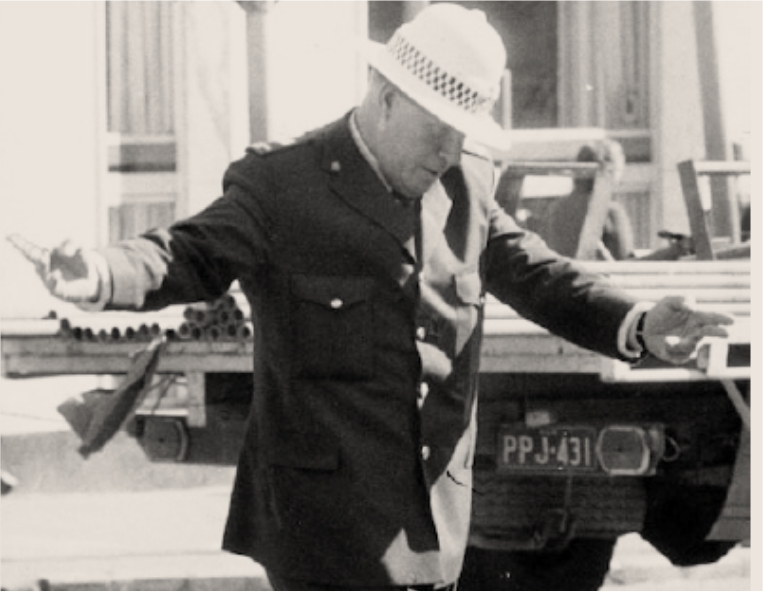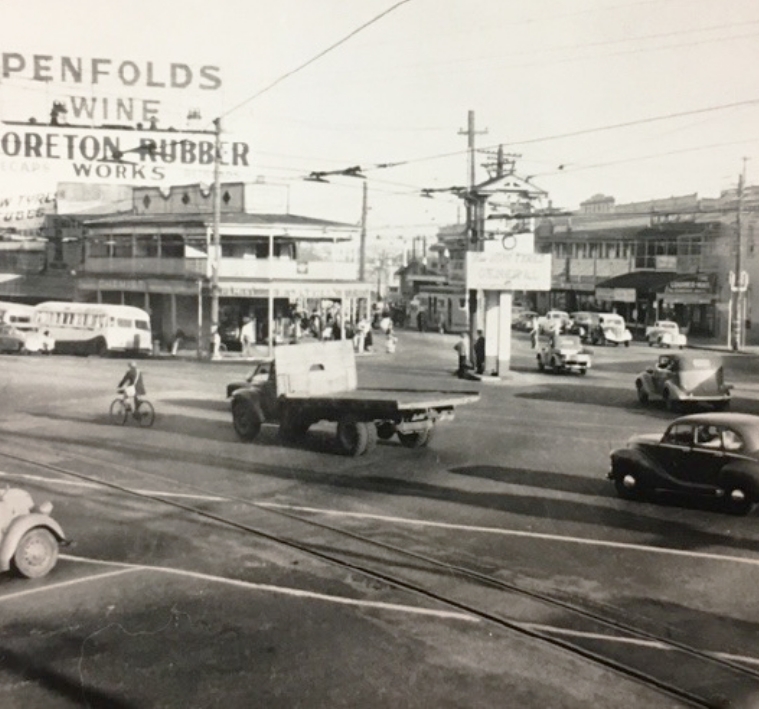Some Gabba personalities

‘Dancing’ Dickie Daniells
One character is remembered as a symbol of the Gabba’s heyday in the 1950s and 60s. A humble traffic policeman, Sgt Dick Daniells gained local fame directing the complicated traffic flows of the large Woolloongabba intersection before electrified signals. With cars, trucks, trams, pedestrians and the occasional steam locomotive, Daniels was an entertaining figure in his dark blue uniform and white sun helmet, twirling and side-stepping. Known for his banter with passing motorists, Daniells The Courier-Mail later remembered how “Sergeant ‘Dancing’ Dick Daniells, originator of the ‘diamond’ turn, would each morning whistle, wave, point and pirouette thousands of cars” through the Fiveways. (Courier-Mail, 1981: p. 16)
Clem Jones
No other individual has impacted the development and modern appearance of the Gabba so much as Clem Jones. Brisbane’s energetic, combative Lord Mayor between 1961 and 1975, Jones modernised many aspects of the city, not least its road services and sewerage. In the process he abolished the tramway system in favour of cars and buses, removing this distinctive feature from the busy life of the Fiveways and other intersections across Brisbane forever. He also initiated Brisbane’s status as an international city, commencing the effort that would culminate in the city’s hosting of the 1982 Commonwealth Games.
An energetic, often provocative figure, Jones also made his mark as Chairman of the Brisbane Cricket Ground Trust, and oversaw the enlargement and remodelling of the Gabba in the early 1970s. Jones himself was honoured with the opening of a major new grandstand in his name. He characteristically insisted on personally preparing the wicket for the 1975 Test between Australia and the West Indies, despite his lack of credentials or experience. It proved as controversial as its curator, described by one observer as ‘baked mud garnished with grass clippings’ (Smith, 1995: 126). With the pitch deteriorating rapidly, according to one Gabba legend, furtive repairs after dark were needed for it to see out the match.

The Gabba Fiveways, c. 1955, with tramway signals cabin. State Library of Queensland

